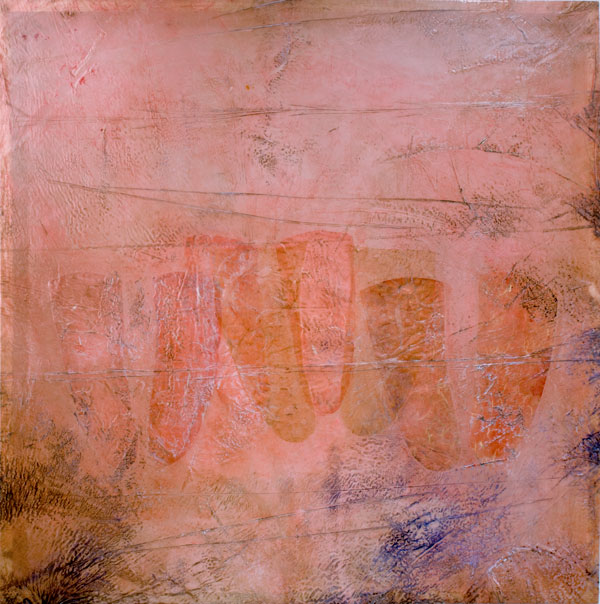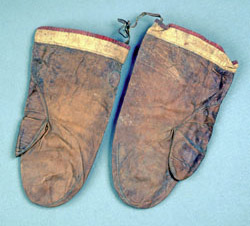|
Tony Ayala, (Chumash)
Antonio A. Ayala Sr. was born, raised, and still lives in Ventura County, California. He started carving in the mid-1980s learning primarily from the ethnographic notes of late 19th- and early 20th-century anthropological interviews with his ancestors. Antonio says carving stone is great therapy for the heart & soul and enjoys sharing his skills and knowledge with other Chumash natives.
Phillip John Charette, (Yup'ik)
Philip John Charette, Aarnaquq, is an Alaskan Native Yup'ik artist specializing in sculpture, Yup'ik spirit masks, and Native musical instruments. Charette's art is rooted in historic and traditional Yup'ik "ways of being," focusing primarily on spirits and Yup'ik cosmology while incorporating a unique contemporary style.
Nicholas Galanin, (Tlingit/Aleut)
Born in Sitka, Alaska, into a long line of Northwest Coast Native artists, Nicholas Galanin has struck an intriguing balance between his origins and the course of his practice. Having trained extensively in "traditional" as well as "contemporary" approaches to art, he pursues them both in parallel paths producing work that simultaneously preserves his culture and explores new perceptual territory.
Michael Halady, (Duwamish)
A member of the Duwamish tribe and a descendent of Chief Seattle and his daughter Angeline, Halady is a widely-recognized carver whose work has taken many forms, including sculptures and poles. Halady's Story Pole is on permanent display at the Belvedere Viewpoint Park in West Seattle.
Anna Hoover, (Aleut)
Anna Hoover, daughter of carver John Hoover, has worked in many media including photography and sculpture. Hoover was a recent recipient of a National Native Creative Development grant. She is currently a graduate student working on a double degree in art history and communications in the University of Washington's Native Voices program.
Garrett Jackson, (Tlingit)
Garrett Jackson, Xeach´; was born in southeast Alaska and is of the Tlinigit Teikiwiedí clan. Jackson finds his main inspiration in the items that his great-grandfather, Lt. George T. Emmons, collected for museums in the late 1800s and early 1900s; "I really enjoy studying the old pieces my ancestors made, and trying to capture the same feelings and traditions, in my works."
DeAnn Sackman-Jacobson, (Duwamish)
DeAnn Sackman-Jacobson, a descendent of Chief Seattle and his daughter Angeline, first learned basket weaving in 2003, and mastered her art as an apprentice with Mary Lou Slaughter. Sackman-Jacobson is dedicated to preserving her Native arts and culture and passing this art on to others.
Swil Kanim, (Lummi)
Swil Kanim is an award-winning Native American violinist who advocates self-expression to create stronger community. He intertwines his music with storytelling, poetry, and audience interaction.
Sonya Kelliher-Combs, (Athabascan/Inupiaq/German/Irish)
Sonya Kelliher-Combs' cultural background, including Athabascan, Inupiaq, and a mixture of German and Irish, is a significant influence on the works that she creates. By layering her paintings and installations with unorthodox materials, Kelliher-Combs walks in the footsteps of the Alaskan Native Americans before her, for whom life has always been centered on that which can be harvested from their region.
Tima Lotah Link, (Santa Barbara Chumash)
Tima Lotah Link is Chumash from Santa Barbara, and she is both a Native artisan and a basket weaver. She enjoys learning and teaching in her Chumash community. Tima is happiest in the mountains—up to her ears in sage, juncus, dogbane, and ticks.
Justin McCarthy, (Yup'ik)
Justin McCarthy recently received the In the Spirit "Honoring our Ancestors" award for his Tegumiak Finger Masks from the Washington State Historical Society and the Evergreen State College's Longhouse Education and Cultural Center. He is currently a graduate student in the University of Washington's Museology program.
David Neel, (Kwagiutl)
A professional photographer as well as a hereditary Kwagiutl artist, David Neel works in a number of media including wood sculpture, photography, printmaking, and painting. Neel uses the work of his ancestors as the starting point for his own interpretation of carving and design. He is the grandson of Ellen Neel, Kwagiutl carver.
Tanis S'eiltin, (Tlingit)
Tanis Maria S'eiltin was born into a family of artists and her art is informed by her rich Tlingit heritage. While her "formal art training began at home," S'eiltin received a bachelor of fine arts at the University of Alaska and found her political voice and unique aesthetic while in graduate school at the University of Arizona. She is currently a professor at Western Washington University's Fairhaven College of Interdisciplinary Studies.
Preston Singletary, (Tlingit/Filipino/European)
Preston Singletary is a multi ethnic individual with connections to the Alaskan Tlingit, Filipino and European cultures. Singletary considers his work in glass "a catalyst material reflecting growth and change of [and] within tribal culture. It declares that we as indigenous people have the access to this technological material, and can master and utilize it to express ourselves and our culture."
Mary Lou Slaughter, (Duwamish)
The great-granddaughter of Chief Seattle, Mary Lou Slaughter studied Salish basket weaving with Ed Carriere, using that knowledge to inspire a renewed pride for the unique traditions and creations of the Duwamish. Slaughter's award-winning baskets are shown in museums and galleries across the United States.
Matika Wilbur, (Swinomish/Tulalip)
Educated at the Brooks Institute, Makita Wilbur's artistic photographs capture the essence of contemporary Native American elders from Coast Salish Tribes. Her work has been displayed at Swinomish and Tulalip, as well as the Seattle Art Museum.
|

Flesh Walrus Family Portrait
Sonya Kelliher-Combs

Arctic Men's Mittens
On loan from the Department of the Interior
|

